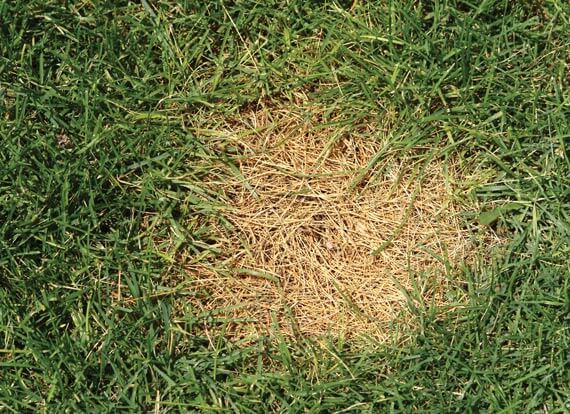
Many funguses live in the soil without ever causing problems for your lawn. But some, under the right conditions, can result in diseases that can cause serious harm. Unfortunately, Atlanta’s hot, humid summers provide some of the conditions that help promote these maladies.
These funguses can spread through your lawn very quickly. So it’s important to know how to lower the risk of your lawn becoming infected, how to recognize the signs of a fungal disease, and what to do if you see symptoms of infection.
How to Make Your Lawn More Resistant to Fungal Diseases
You can’t control the heat and humidity of summer, but there are things you can do to reduce the risk of a fungal disease developing in your lawn.
- Water Wisely: Avoid watering in the late evening or at night. This leaves the grass too wet for too long, which encourages fungal diseases. Instead, water in the morning (preferably before 10 am) or early afternoon (between 4 and 6 pm). This allows excess moisture to evaporate before dusk.
Also avoid frequent, shallow watering. Instead, water deeply just once or twice a week to promote a healthy root system and make turf more resistant to disease.
- Aerate Annually. Compacted soil is one of many things that can stress a lawn and make it more prone to fungal diseases. Aeration loosens the soil, letting water, air, and nutrients more freely travel down to the root system, where they’re needed.
- Raise Your Mower Deck. Let your grass grow a bit higher in the summer. The extra height helps shade and cool the soil, protecting the all-important root system.
- Have Your Soil Tested. A high pH level and nutrient imbalances, such as excessive nitrogen, are both factors that can make a lawn more susceptible to fungal diseases and other problems. A professional soil test will determine if either of these conditions exists and how they can be corrected.
Don’t Ignore Discolored Spots or Patches in Your Lawn
Most lawn fungal diseases first show up as discolored patches or spots. For example, brown patch, which is common in Atlanta lawns, starts out as brownish, roughly symmetrical patches ranging in size from a few inches to a few feet. As the disease progresses, a donut-shaped pattern starts to emerge.
Other fungal diseases show up in a variety of shapes, sizes, and colors. Whatever the pattern, be watchful for lawn discolorations that appear brown, dark green, tan or straw-colored, yellow, or any other unusual color.
Prompt Diagnosis and Treatment Are Crucial
If you are seeing discolored patches in your lawn, it’s best to contact an Atlanta lawn care provider who can first accurately diagnose the disease and then treat it with the appropriate fungicide or recommend some other course of action. For example, at Simply Organic Turf Care, we’ve had success treating dollar spot, another common fungal disease in Atlanta lawns, but not with a fungicide. Instead, we apply a special formulation of our organic fertilizer. It’s just another way our organic lawn care brings natural alternatives to homeowners from Alpharetta to Smyrna and beyond.

